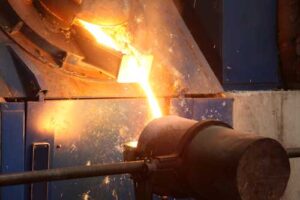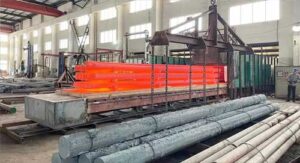When it comes to demanding industrial applications involving high temperatures, hot work tool steel emerges as a hero among materials. Its remarkable ability to withstand extreme heat is pivotal in numerous manufacturing processes, making it an indispensable choice for industries such as die casting, forging, and extrusion. In this comprehensive exploration, we will delve deep into the importance of heat resistance in hot work tool steel, understanding how this exceptional property shapes its applications and utility.
1. Introduction
Heat resistance, in the context of materials used in manufacturing, is a crucial characteristic. It enables materials to maintain their integrity and mechanical properties when subjected to high temperatures. This article will focus on one specific material renowned for its heat resistance: hot work tool steel.
2. Understanding Hot Work Tool Steel
Composition and Alloying Elements
Hot work tool steel is carefully crafted with a blend of alloying elements that enhance its properties. These elements often include chromium, tungsten, molybdenum, and vanadium. Their presence imparts specific characteristics to the steel, with heat resistance being a standout feature.
Heat Resistance: A Core Property
Heat resistance is at the heart of hot work tool steel’s utility. It can endure and function effectively in environments where temperatures soar beyond 600°C (1112°F). This property is achieved through a combination of alloying elements and precise metallurgical engineering.
3. Applications That Demand Heat Resistance
Die Casting
In the die casting industry, hot work tool steel is the material of choice for crafting molds. The intense heat generated during the process requires a material that can maintain its form and durability without softening or deforming.
Forging
Forging operations involve extreme temperatures to shape metal components. Hot work tool steel, with its exceptional heat resistance, ensures that forging dies maintain their structural integrity during these processes.
Extrusion
The extrusion of materials like metals and plastics necessitates high temperatures and pressure. Hot work tool steel’s ability to withstand these conditions makes it ideal for extrusion tooling.
Glass Manufacturing
Glass manufacturing involves working with molten glass at extremely high temperatures. Hot work tool steel is used for glass blowing molds and other critical components due to its heat-resistant properties.
4. The Role of Heat Resistance in Hot Work Tool Steel
Preventing Softening and Deformation
In high-temperature applications, ordinary steel would soften and deform, rendering it ineffective. Heat resistance in hot work tool steel ensures that it maintains its structural integrity, allowing it to perform consistently.
Ensuring Tool Longevity
Heat resistance extends the lifespan of tools and molds made from hot work tool steel. This durability translates to cost savings and reduced downtime for maintenance and replacement.
Maintaining Product Quality
In industries where precision and product quality are paramount, such as aerospace and automotive, the heat resistance of hot work tool steel ensures that components are manufactured with utmost precision and consistency.
5. Challenges and Solutions
Heat-Related Challenges in Manufacturing
The manufacturing industry often faces challenges related to high temperatures, including material softening, deformation, and reduced tool life. These challenges can lead to production delays and increased costs.
Hot Work Tool Steel as the Solution
Hot work tool steel emerges as the solution to these challenges. Its ability to resist heat ensures that manufacturing processes can continue seamlessly, maintaining both efficiency and product quality.
6. FAQs
Frequently Asked Questions About Heat Resistance in Hot Work Tool Steel
Q1. Are there different grades of hot work tool steel with varying heat resistance?
Yes, there are various grades of hot work tool steel, each offering a range of heat resistance properties to suit different applications and operating conditions.
Q2. Can hot work tool steel be used in applications with extreme temperature fluctuations?
Yes, hot work tool steel’s ability to withstand thermal cycling makes it suitable for applications with temperature fluctuations, as long as the temperature extremes do not exceed its limits.
Q3. What are the common challenges faced when using materials with poor heat resistance?
Materials with poor heat resistance can soften, deform, or even melt when exposed to high temperatures, leading to tool and equipment failure, reduced product quality, and increased production costs.
Q4. Are there alternative materials to hot work tool steel for heat-resistant applications?
While there are alternative materials, hot work tool steel remains a top choice due to its unique combination of heat resistance, durability, and machinability.
Q5. Can heat resistance in hot work tool steel be enhanced through heat treatment?
Yes, heat treatment processes can further optimize the heat resistance of hot work tool steel, allowing it to perform exceptionally in specific applications.
In conclusion, the importance of heat resistance in hot work tool steel cannot be overstated. It is the cornerstone of its utility in industries where high temperatures are a constant challenge. From die casting to glass manufacturing, this exceptional material ensures that manufacturing processes run smoothly, tools endure, and product quality remains uncompromised, ultimately contributing to the success of various industrial sectors.

